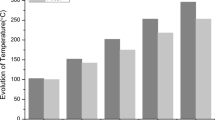Abstract
Before 1980s, the circular suspension spring in automobile subjected to torsion fatigue load, under the cyclic normal tensile stresses, the majority of fatigue fracture occurred was in normal tensile fracture mode(NTFM) and the fracture surface was under 45° diagonal. Because there exists the interaction between the residual stresses induced by shot peening and the applied cyclic normal tensile stresses in NTFM, which represents as “stress strengthening mechanism”, shot peening technology could be used for improving the fatigue fracture resistance(FFR) of springs. However, since 1990s up to date, in addition to regular NTFM, the fatigue fractures occurred of peened springs from time to time are in longitudinal shear fracture mode(LSFM) or transverse shear fracture mode(TSFM) with the increase of applied cyclic shear stresses, which leads to a remarkable decrease of FFR. However, LSFM/TSFM can be avoided effectively by means of shot peening treatment again on the peened springs. The phenomena have been rarely happened before. At present there are few literatures concerning this problem. Based upon the results of force analysis of a spring, there is no interaction between the residual stresses by shot peening and the applied cyclic shear stresses in shear fracture. This means that the effect of “stress strengthening mechanism” for improving the FFR of LSFM/TSFM is disappeared basically. During shot peening, however, both of residual stress and cyclic plastic deformed microstructure are induced synchronously like “twins” in the surface layer of a spring. It has been found for the first time by means of force analysis and experimental results that the modified microstructure in the “twins” as a “structure strengthening mechanism” can improve the FFR of LSFM/TSFM. At the same time, it is also shown that the optimum technology of shot peening strengthening must have both “stress strengthening mechanism” and “structure strengthening mechanism” simultaneously so that the FFR of both NTFM and LSFM/TSFM can be improved by shot peening.
Similar content being viewed by others
References
FUCHS H O, BICKEL P E. Shot peening of springs[J]. Springs, 1963, May: 16–20.
BIRD G, SAYNOR D. The effect of peening shot size on the performance of carbon steel springs[J]. Springs, 1986, October: 69–79.
HAYES M. Cautionary tale: shot peening compression springs[J]. Springs, 2009, April: 54–55.
Metal Improvement Company, A Subsidiary of Curtiss-Wright Corporation. Shot peening applications[M]. 9th ed. 2005.
Society of Automotive Engineers. Aerospace material specification, AMS-S-13165, Shot peening of metal parts[S]. 1997.
Military specification, MIL-S-13165C, Shot peening of metal parts[S]. 1989.
Military specification, MIL-P-81985 (AS), Peening of metals[S]. 1974.
Department of the Navy. NAVAIRINST 4870.2, AIR-536A, Shot peening of aircraft components[S]. 1990.
HU Zhizhong, WU Yusheng, CAI Heping, et al. Mechanism map of torsion fatigue fracture[J]. Acta Metallurgica Sinica, 1990, 26(5): 50–55. (in Chinese)
HU Zhizhong, MA Lihua, CAO Shuzhen. A study of shear fatigue crack mechanisms[J]. Fatigue & Fracture of Engineering Materials & Structures, 1992, 15(6): 563–572.
WANG Renzhi, JIANG Chuanhai. Normal and shear fatigue fracture modes of circular coil spring and the approach of improving fatigue fracture resistance[J]. China Surface Engineering, 2010, 23(6): 7–14. (in Chinese)
WANG Renzhi, JIANG Chuanhai. Investigation on early fatigue fracture for automobile suspension springs[J]. Transactions of Materials and Heat Treatment, 2012, 33(6): 127–135. (in Chinese)
WANG Renzhi, JIANG Chuanhai. Failure analysis of fatigue fracture of a electric motor shaft and a gear shaft for an electric locomotive[M]//WANG Renzhi, ed. Proceedings of Shot Peening Strengthening of Metal Materials and Surface Integrity, Beijing: China Aerospace Press, 2011, 283–311. (in Chinese)
WANG Renzhi. Overview on the shot peening principle and its strengthening mechanism for metallic materials[J]. China Surface Engineering, 2012, 25(6): 1–9. (in Chinese)
Author information
Authors and Affiliations
Corresponding author
Additional information
WANG Renzhi, born in 1932, is a professor at Metal Physics Laboratory, Beijing Institute of Aeronautical Materials, China. His main research interests include fatigue and fracture, surface integrity of material, surface strengthening technology and failure analysis for metal parts.
RU Jilai, born in 1962, is currently a senior engineer at Metal & Chemistry Institute, China Academy of Railway Science. His main research interests include fatigue and fracture and surface strengthening technology.
Rights and permissions
About this article
Cite this article
Wang, R., Ru, J. Overall evaluation of the effect of residual stress induced by shot peening in the improvement of fatigue fracture resistance for metallic materials. Chin. J. Mech. Eng. 28, 416–421 (2015). https://doi.org/10.3901/CJME.2015.0112.013
Received:
Revised:
Accepted:
Published:
Issue Date:
DOI: https://doi.org/10.3901/CJME.2015.0112.013




